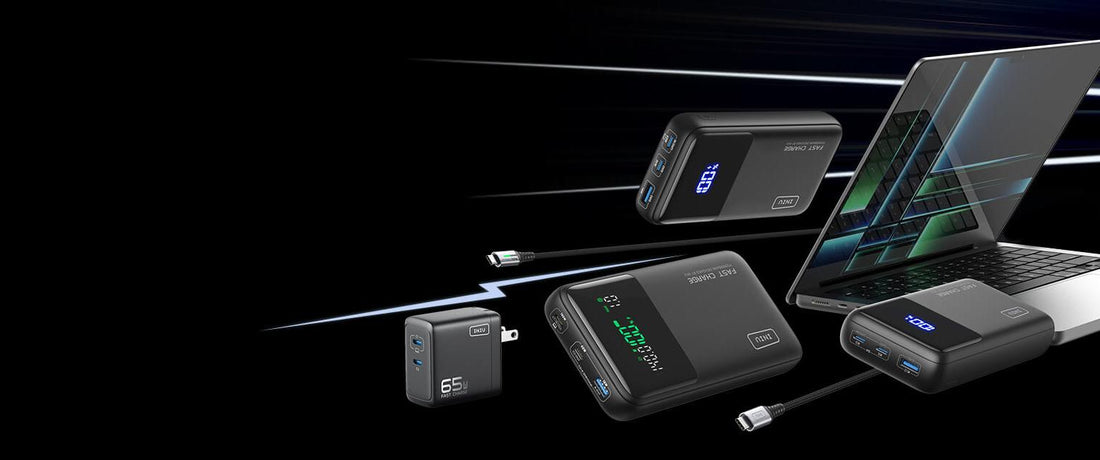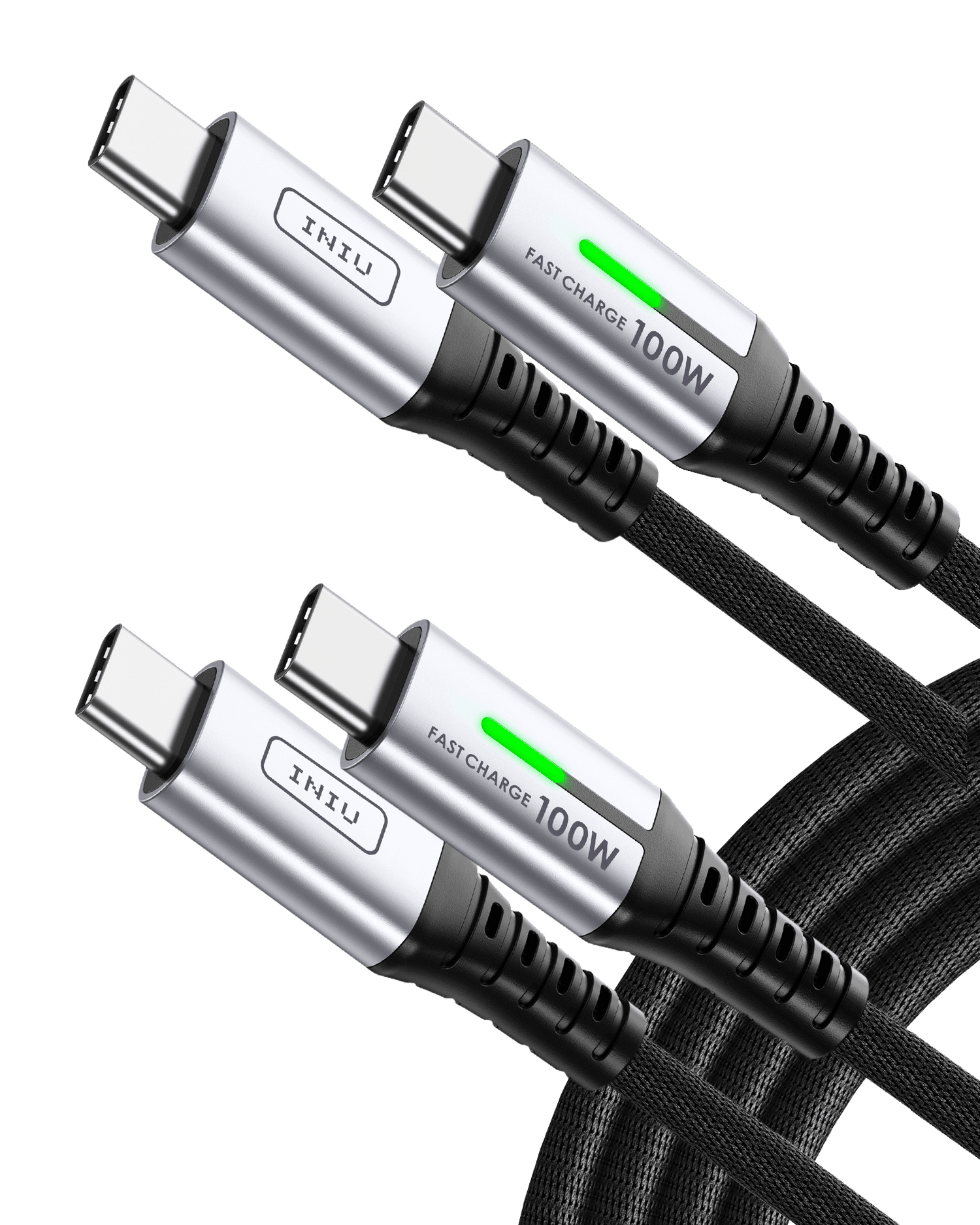
Power Bank or Portable Charger? What to Know Before You Buy
When your phone runs out of battery on the go, what do you reach for—a power bank or a portable charger? If you're like most people, you might not even know there's a difference. In fact, many use the terms interchangeably.
This article is your complete guide to understanding what portable chargers and power banks really are, how they works, and what to look for when buying one. We'll also help you find the best power bank, explain what mAh is for a power bank, and even cover features like magnetic phone chargers for newer iPhones.
Power Bank or Portable Charger — Same Thing or Not?

When you're shopping for a device to keep your phone charged on the go, you might come across two common terms: portable charger and power bank. Are they different products, or simply two ways of referring to the same thing?
Let's break it down.
What's a Power Bank?
A power bank is an external battery device that stores electrical energy and allows you to charge your mobile devices on the go. It typically comes with one or more USB output ports and can be recharged via a USB-C or Micro-USB input. Most power bank portable charger models today use lithium-ion or lithium-polymer batteries, offering a reliable and rechargeable power source.
What's a Portable Charger?
A portable charger is essentially the same thing — a device that allows you to charge your devices away from a wall outlet. The terms are often used interchangeably, especially in consumer electronics. However, in casual usage, "portable charger" might also refer more broadly to anything mobile that can charge another device, including wireless charging pads or even car battery boosters.
In most prospects, we'll treat portable charger power bank as synonymous with power bank.
Power Bank Buying Guide – What to Look For
After understanding the definition of a power bank, let's take a look at how to choose a power bank.
Battery Capacity (mAh)
Battery capacity is measured in milliamp-hours (mAh). It indicates how much charge the power bank can store. There are several common capacity specifications of power banks on the market. Here's a quick breakdown:
5,000 mAh: Enough to fully charge a smartphone once.
10,000 mAh: Charges most smartphones about 2 times.
20,000 mAh or more: Great for tablets, laptops, or multiple phones over several days.
Keep in mind that actual usable capacity is about 60-70% of the rated mAh due to voltage conversion loss (typically from 3.7V internal to 5V output). So, if you need to charge multiple times or use it for a long time, please try to choose a power bank with a larger capacity.
Charging Speed & Output (W)
Charging speed depends on output wattage (W), which is calculated as volts*amps. Higher wattage means faster charging — if your device supports it.
Look for:
12W (5V/2.4A): Enough for phones, smart watch, AirPods.
18W: Entry-level fast charging.
20–30W: Ideal fast charging for newer phones and some tablets.
45W+: Needed for charging ultra-laptops like MacBook Air.
65W+: Can charge most light laptops. But if you are using a high-performance laptop, please consider an output of more than 100W.
Many modern power bank portable charger options support USB-C PD (Power Delivery), which negotiates voltage dynamically — typically 5V, 9V, 12V, 15V, or 20V — based on the device's needs. For Apple devices, 20W+ PD is best for fast charging.
Ports & Connectivity
Consider the following:
Input Port: USB-C or Micro-USB (USB-C is faster and more common now).
Output Ports: USB-A for legacy devices, USB-C for modern gadgets.
Number of Ports: If you charge multiple devices, get a power bank with at least two outputs.
Wireless Charging: Some power banks use a magnetic charging configuration and can provide wireless charging for devices that support magnetic charging. This is a convenient choice for people using the iPhone 12+ series phones.
Size & Portability
Generally speaking, the larger the capacity of a power bank, the larger its size will be. If you're looking for a power bank for daily use, a 10,000 mAh power bank offers a great balance between portability and performance.
|
Capacity Range |
Use Case |
Portability |
|
<5,000 mAh |
Light use |
Ultra pocketable |
|
10,000 mAh |
Daily use, phone/tablet |
Still pocketable |
|
20,000+ mAh |
Travel, Camping, laptops, tablets |
Bulkier, for backpacks |
Safety Features
Good power bank portable charger products come with built-in safety mechanisms:
- Overcharge protection
- Short-circuit prevention
- Temperature control
- Smart device detection (adjusts power output)
Look for certifications like CE, FCC, and RoHS and choose a reliable power bank brand. As the No. 1 power bank brand on Amazon, INIU has gained the trust of consumers all over the world in more than ten years of development.
What Kind of Power Bank Do You Actually Need?

There are many different types of power banks on the market. Let's see how to choose according to your own needs.
|
User Type |
Devices You Charge |
Recommended Features |
INIU Pick |
|
Minimalist |
Smartphone only |
5,000 mAh, ultra-compact |
|
|
Daily User |
Phone + earbuds/tablet |
10,000 mAh, dual ports, 22.5-45W PD |
|
|
Traveler |
Multiple phones, tablets |
20,000 mAh, 2–3 outputs, fast charging |
|
|
Laptop User |
USB-C laptops, phones |
25,000 mAh+, PD 65–140W, PPS support |
|
|
iPhone User |
iPhone 12–16 |
Magnetic phone chargers, 15W Qi2 wireless |
Frequently Asked Questions
Q: How do I know which size of power bank I need?
Consider how often you're away from outlets. If you're traveling or using power-hungry devices (like tablets or laptops), choose a high-capacity unit (20,000mAh+). For daily commutes or backup power, the smallest power bank under 10,000mAh may be more than enough.
Q: What is the difference between USB-A and USB-C ports on a power bank?
USB-A is the traditional charging port and supports standard charging speeds. USB-C is newer, faster, and supports Power Delivery (PD) for quick charging. A good portable charger power bank will ideally have both.
Q: Do magnetic phone chargers work with all phones?
No, magnetic phone chargers are generally designed for compatible iPhones (iPhone 12 and later). Some Android devices also support magnetic alignment if paired with a Magnetic-compatible case or ring.
Q: Can I take a power bank on a plane?
Yes, but with restrictions. According to FAA guidelines, power banks must be under 100Wh (watt-hours) to be carried onboard in your carry-on luggage. Most consumer portable charger power banks under 27,000mAh meet this requirement.
Q: How long does it take to charge a power bank?
Charging time depends on the battery's capacity and the input wattage. A 10,000mAh power bank with an 18W USB-C input may take around 2.5–4 hours. Larger capacity units may take longer unless they support fast input charging (e.g., 30W+).
Conclusion
Whether you call it a power bank or a portable charger, choosing the right one comes down to knowing your needs. Evaluate how much capacity you need, what devices you'll be charging, and whether fast charging or portability matters more to you.
Look for portable charger power bank models that match your device's specs, and don't forget about safety and certified reliability. If you're shopping for the smallest power bank or one with the most powerful output, brands like INIU offer a wide range of well-designed options.
Understanding what a power bank is, how mAh affects real usage, and the value of features like magnetic phone chargers helps you avoid wasting money and ensures your devices stay powered when you need them most.



